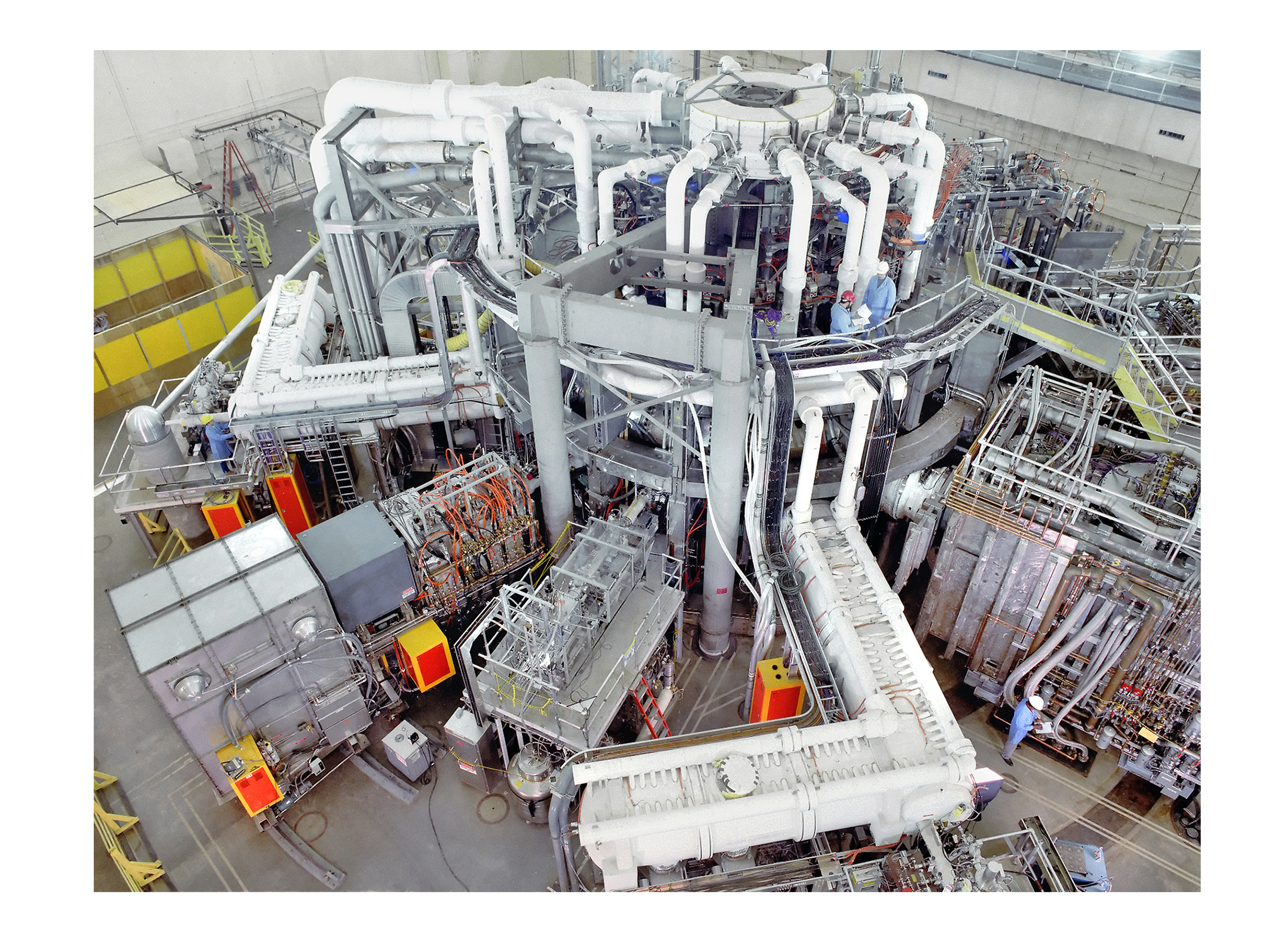Second high honor
The landmark designation marks the second high honor received by PPPL in recent years. In 2018 the American Society of Mechanical Engineers recognized the laboratory as an Historic Mechanical Engineering Landmark for its achievements in the quest to develop magnetically controlled fusion energy.
The TFTR facility, under the leadership of PPPL physicist Richard Hawryluk, pioneered the study of mixtures of hydrogen isotopes deuterium and tritium (D-T) to fuel fusion reactions. The experiments, begun in December 1993, were the first to use the 50-50 D-T fuel mix that future fusion power plants will use. Fusion fuel temperatures up to 500 million degrees centigrade were made possible by the world’s most powerful (40 million watts) D-T neutral beam plasma heating system.
ANS, the premier U.S organization for promoting nuclear science, will formally announce at its virtual winter meeting that starts November 16 their designation of the TFTR tokamak as an ANS Historic Nuclear Landmark. The landmark plaque recognizes TFTR “For demonstrating significant fusion energy production and tritium technologies for future nuclear fusion power plants and the first detailed exploration of magnetically confined deuterium-tritium fusion plasmas.”
ANS has awarded such landmark designations since 1985 to identify and memorialize public and private nuclear ventures that were placed in service 20 or more years ago and where “outstanding physical accomplishments took place that were instrumental in the advancement and implementation of nuclear technology and the peaceful uses of nuclear energy.” Previous landmark designees include Chicago Pile 1, the first sustained chained nuclear reaction, which went into operation in 1942, and Shippingport Atomic Power Station, the U.S. fission power demonstration plant, which began operating in 1957.
World-wide collaboration
Physicists, engineers and staffers throughout the laboratory along with collaborating scientists and engineers from around the world produced the TFTR achievements. “This was a laboratory-wide scientific and technical undertaking that involved national and international collaborators who played a major role in all aspects of the experiment and also with the U.S. Department of Energy that supported these experiments,” Hawryluk, formerly interim laboratory director and currently associate director for fusion at PPPL, told the ANS.
“For those of us who participated in the deuterium-tritium experiments,” he said, “it was a once-in-a-lifetime opportunity filled with challenges in demonstrating significant fusion energy and the excitement of extending the frontier of fusion research to near fusion plasma conditions.”
Steve Cowley, PPPL director who was a researcher at the laboratory while TFTR was mobilizing for the D-T experiments, noted the critical role the results continue to play in fusion development. “This work verified the production of fusion energy in tokamaks running on high-power fuel,” Cowley said, “and demonstrated the world-leading role of PPPL in the process.”
Fusion, the power that drives the sun and stars, combines light elements in the form of superhot plasma — the state of matter composed of free electrons and atomic nuclei that makes up 99 percent of the visible universe — to generate massive amounts of energy. TFTR paves the way for sustained reproduction of this process in ITER, the international tokamak under construction in France that aims to produce 10 times more energy than will be needed to heat the plasma to temperatures that fuel the reactions.
PPPL launched planning for TFTR in 1973, said Dale Meade, former head of TFTR and former deputy director of the laboratory, “with the objective to demonstrate controlled nuclear fusion energy from deuterium-tritium reactions in a magnetically confined plasma.” The facility began operation in 1982 and ran only on deuterium fusion fuel while developing all aspects of the tokamak system required for the D-T mission, which began a decade later. A major challenge for the mission was the management of tritium, a radioactive isotope with a half-life of 12 years, which PPPL successfully handled and managed safely throughout the mission.
Key milestone
A key milestone was the first operation of a closed-cycle tritium fueling system that injected tritium in the plasma, recovered the unreacted tritium and prepared it for reinjection into an operating tokamak. Such a cycle allowed repeated use of the tritium within the TFTR facility and significantly reduced the need for replenishing the tritium fuel from off-site sources, reduced the on-site radioactive waste processing and transportation of waste tritium to off-site disposal facilities.
Also among the experiments’ many achievements, said Meade, “was the first comprehensive study of the behavior of high-energy alpha particles produced in the D-T fusion reaction that are critical to sustaining the reactions in a fusion power plant.” Control of such particles will be required for ITER and basic to what is called a “burning plasma.”
Burning plasmas will be studied in ITER and in a future fusion pilot plant. A program leading to such a plant was called for in a 2018 report by the National Academy of Sciences, which has recently formed a new panel that is studying and will recommend to the DOE the key goals that a pilot plant should meet.
The ANS landmark designation thus looks both backward at the ground-breaking accomplishments of TFTR and forward to their impact on the future development of fusion energy. Over its 15-year lifetime the landmark facility has provided key technical details for the design and operation of future deuterium-tritium fusion facilities and power plants.
PPPL, on Princeton University’s Forrestal Campus in Plainsboro, N.J., is devoted to creating new knowledge about the physics of plasmas — ultra-hot, charged gases — and to developing practical solutions for the creation of fusion energy. The Laboratory is managed by the University for the U.S. Department of Energy’s Office of Science, which is the single largest supporter of basic research in the physical sciences in the United States and is working to address some of the most pressing challenges of our time. For more information, visit energy.gov/science.




